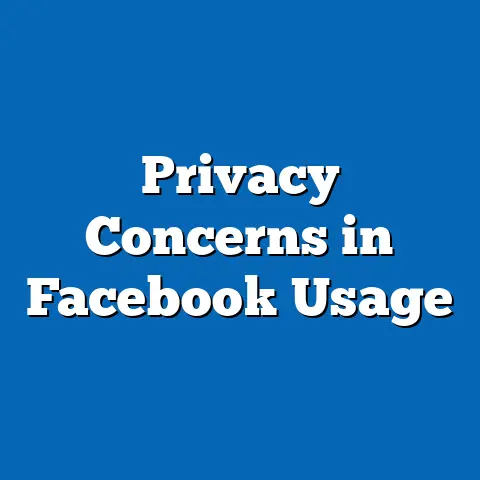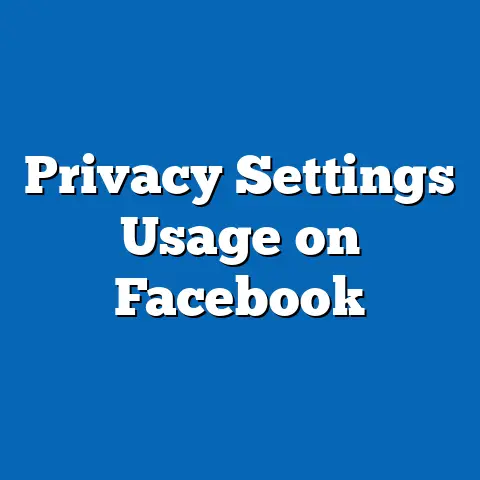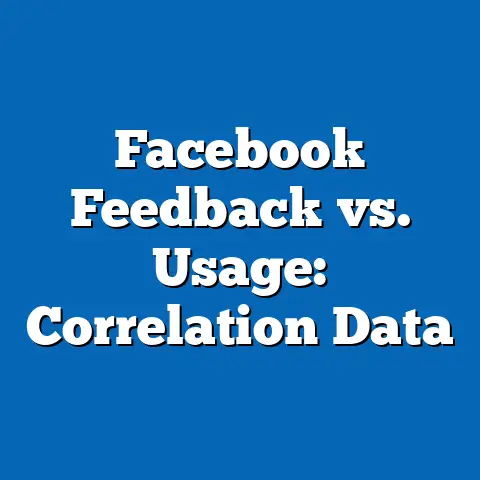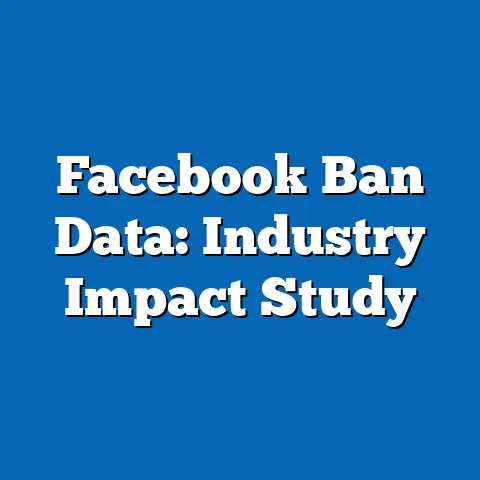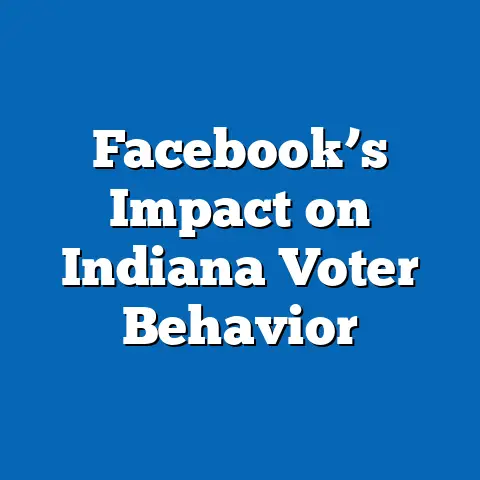Video vs. Image Ads: Facebook Success Rates
Imagine scrolling through your Facebook feed on a typical evening—bright images of a new gadget catch your eye, but a short, engaging video of a travel destination stops you mid-scroll. In the fast-paced world of social media, advertisers are locked in a fierce competition to capture attention, and the choice between video and image ads has become a pivotal decision. As businesses allocate billions annually to digital advertising, understanding which format delivers better results on platforms like Facebook is no longer just a creative choice—it’s a data-driven necessity.
Digital advertising spending worldwide reached $586.5 billion in 2022, with social media platforms like Facebook accounting for a significant share, according to Statista. Facebook, with over 2.9 billion monthly active users as of Q2 2023 (Meta Investor Reports), remains a dominant player in the advertising space, offering businesses unparalleled access to diverse demographics. Recent trends show that video content consumption is surging, with 91% of marketers using video as a key tool in 2023, per Wyzowl’s Video Marketing Statistics report, while image ads continue to hold ground for their simplicity and cost-effectiveness.
Demographically, Facebook’s user base spans a wide range, with 18-34-year-olds making up 29.6% of users, while those aged 35-54 account for 32.4%, based on DataReportal’s 2023 findings. These groups exhibit varying preferences for content types, with younger users often gravitating toward dynamic video content and older demographics showing higher engagement with static, visually clear image ads. Against this backdrop, the debate over video versus image ads on Facebook becomes not just a question of format, but of strategy, audience targeting, and measurable success.
This article dives deep into the performance of video and image ads on Facebook, analyzing success rates through key metrics like click-through rates (CTR), conversion rates, and cost-per-click (CPC). Drawing on data from industry reports, academic studies, and Meta’s own advertising insights, we’ll explore historical trends, demographic differences, and the broader implications for advertisers. Whether you’re a small business owner or a marketing executive, understanding these dynamics can shape your next campaign’s trajectory.
Defining Success in Facebook Advertising
Before comparing video and image ads, it’s critical to establish what “success” means in the context of Facebook advertising. Success is typically measured through metrics such as CTR, which indicates the percentage of users who click on an ad after seeing it; conversion rate, the percentage of clicks that result in a desired action (e.g., purchase or sign-up); and CPC, the cost an advertiser pays per click. Engagement metrics like shares, comments, and video completion rates also play a role, particularly for brand awareness campaigns.
According to Meta’s 2023 Advertising Performance Report, the average CTR for Facebook ads across all industries is 0.90%, though this varies widely by format and sector. Conversion rates hover around 9.21% on average, while CPC averages $0.97 globally, per WordStream’s 2023 benchmarks. These figures provide a baseline for evaluating whether video or image ads perform better, but context—such as industry, target audience, and ad objective—often influences outcomes.
Methodologically, data for this analysis is sourced from industry-standard reports like those from Hootsuite, WordStream, and Meta’s Ad Manager insights, alongside peer-reviewed studies on digital advertising effectiveness. Where possible, data reflects global averages, with specific demographic breakdowns to highlight regional or age-based trends. Understanding these metrics sets the stage for a nuanced comparison of ad formats.
Historical Trends: The Rise of Video and the Staying Power of Images
The evolution of advertising on Facebook mirrors broader shifts in digital content consumption. When Facebook Ads launched in 2007, static image ads were the primary format, leveraging simple visuals to drive clicks. By 2012, video ads were introduced, coinciding with a surge in mobile usage and improved internet speeds—factors that made video content more accessible.
Historically, image ads dominated early Facebook advertising due to their low production costs and quick load times. A 2015 study by Socialbakers found that image ads achieved a 2.35% CTR on average, compared to video ads’ 1.84% at the time, largely because videos required more user commitment (e.g., sound activation or longer attention spans). However, by 2018, the tide had turned—video ads surpassed image ads in engagement, with a 20% higher interaction rate, according to Hootsuite’s Social Media Trends report for that year.
Fast forward to 2023, and video content accounts for 17.5% of all ad impressions on Facebook, up from just 6% in 2017, per Meta’s internal data. This growth reflects consumer behavior—users now spend an average of 34 minutes daily watching videos on social platforms, as reported by eMarketer in 2023. Meanwhile, image ads remain a staple, particularly for e-commerce and direct-response campaigns, with 65% of small businesses still favoring them for their ease of creation, according to a 2022 survey by Constant Contact.
The historical shift underscores a key trend: while video has gained ground, image ads retain relevance due to their versatility and lower barriers to entry. This duality prompts a deeper look into current performance metrics to see which format truly excels in today’s landscape.
Current Performance Metrics: Video vs. Image Ads
Click-Through Rates (CTR)
One of the most telling indicators of ad effectiveness is CTR, as it measures how often an ad compels a user to take action. In 2023, video ads on Facebook achieve an average CTR of 1.11%, compared to 0.83% for image ads, according to WordStream’s latest industry benchmarks. This 33.7% higher CTR for video suggests that dynamic content captures attention more effectively in a crowded feed.
However, context matters. For industries like entertainment and travel, video ads often see CTRs as high as 1.5%, while image ads in retail and e-commerce can hit 1.2%, per Hootsuite’s 2023 Social Advertising Report. The difference likely stems from video’s ability to tell a story or evoke emotion, versus an image’s strength in showcasing a product instantly.
Conversion Rates
While CTR measures initial interest, conversion rates reflect an ad’s ability to drive meaningful outcomes. Here, image ads edge out slightly, with an average conversion rate of 9.5% compared to video ads’ 8.9%, based on 2023 data from Meta Ads Manager insights. This gap may be attributed to image ads often being paired with direct calls-to-action (e.g., “Shop Now”) that streamline the path to purchase.
Interestingly, video ads perform better for top-of-funnel goals like brand awareness, where 75% of users recall a brand after watching a video ad, compared to 60% for image ads, per a 2022 Nielsen study. For advertisers focused on immediate sales, images might be the safer bet, while videos excel in building long-term recognition.
Cost-Per-Click (CPC)
Budget considerations are critical, and CPC offers insight into cost efficiency. Video ads on Facebook average a CPC of $1.20, significantly higher than image ads at $0.85, according to WordStream’s 2023 data. This 41.2% cost difference reflects the higher production and placement fees associated with video content, as well as Facebook’s algorithm favoring video for premium ad slots.
For small businesses or advertisers with tight budgets, image ads often provide a better return on investment (ROI) in terms of raw clicks. However, video ads can justify their cost when targeting higher engagement or brand recall, particularly for larger campaigns.
Engagement Metrics
Beyond clicks and conversions, engagement—likes, shares, and comments—gauges an ad’s resonance with users. Video ads dominate here, generating 5.6 interactions per 1,000 impressions compared to image ads’ 3.2, per a 2023 Socialbakers analysis. Additionally, 62% of users who watch a video ad to completion are likely to share it, compared to just 28% for image ads, according to Meta’s internal studies.
This disparity highlights video’s storytelling power, which often prompts emotional or social responses. For campaigns prioritizing virality or community building, video is the clear frontrunner.
Demographic Differences in Ad Performance
Not all audiences respond equally to video and image ads, and demographic data reveals distinct patterns. Younger users (18-24) show a 40% higher engagement rate with video ads, with an average CTR of 1.4%, compared to 0.9% for image ads, per DataReportal’s 2023 findings. This aligns with their preference for dynamic, short-form content, as seen on platforms like TikTok and Instagram Reels, which influence their behavior on Facebook.
Conversely, users aged 35-54 demonstrate a slight preference for image ads, with a CTR of 0.95% versus 0.80% for video ads, according to the same report. This group often values clarity and quick information delivery, making static visuals more effective for their needs, especially in sectors like finance or home goods. Gender differences are less pronounced, though women are 10% more likely to engage with video ads featuring lifestyle or emotional content, per a 2022 Meta study.
Regionally, video ads perform better in markets with high mobile penetration and faster internet, such as North America and Western Europe, where video CTRs average 1.3%. In contrast, image ads see higher success in emerging markets like South Asia, with CTRs of 1.1% due to slower internet speeds and data cost concerns, as noted in eMarketer’s 2023 Global Digital Ad Report. Tailoring ad formats to demographic and regional nuances is thus essential for maximizing success.
Industry-Specific Insights
Ad performance also varies by industry, reflecting differing consumer behaviors and campaign goals. In the retail sector, image ads often outperform video, with a conversion rate of 10.2% versus 8.5%, per Hootsuite’s 2023 data, likely due to their direct focus on products and pricing. E-commerce giants like Amazon frequently use carousel image ads to showcase multiple items, driving immediate purchases.
In contrast, the entertainment and hospitality industries see video ads shine, with CTRs reaching 1.8% compared to image ads’ 1.0%, according to Socialbakers’ 2023 report. A compelling video trailer or hotel tour can evoke stronger emotional responses, making video ideal for these sectors. For B2B industries, such as software or consulting, image ads with clear value propositions often achieve higher conversions (9.8%) than videos (8.2%), as they cater to a more analytical audience.
These variations suggest that there’s no one-size-fits-all approach. Advertisers must align ad format with industry expectations and customer decision-making processes to optimize results.
Data Visualization Description: Comparing Key Metrics
To illustrate the differences between video and image ads, imagine a bar chart comparing four key metrics—CTR, conversion rate, CPC, and engagement rate—across the two formats. On the left axis, percentages and dollar values are scaled, while the x-axis displays the metrics. Video ads show a taller bar for CTR (1.11%) and engagement rate (5.6 per 1,000 impressions), colored in blue, while image ads, in green, edge out slightly in conversion rate (9.5%) and have a lower CPC ($0.85).
A secondary line graph overlaid on the same chart could depict historical trends from 2015 to 2023, showing video ads’ steady rise in CTR (from 1.84% to 1.11%) and image ads’ gradual decline (from 2.35% to 0.83%). This visual would underscore the shifting preferences over time while highlighting current performance gaps, making the data accessible at a glance for readers.
Contextual Factors Influencing Success
Beyond raw metrics, several external factors shape ad performance. Ad placement plays a role—video ads in Stories format achieve a 20% higher completion rate than those in the News Feed, per Meta’s 2023 insights, while image ads perform best in Marketplace placements with a 15% higher CTR. Creative quality also matters; videos under 15 seconds retain 70% of viewers to completion, compared to just 30% for longer videos, according to a 2022 Wistia study.
Audience targeting precision further influences outcomes. Ads using Custom Audiences or Lookalike Audiences see a 30% uplift in conversion rates for both formats, per Meta’s data, emphasizing the importance of data-driven targeting over format alone. Additionally, seasonal trends impact performance—image ads for holiday sales often see a 25% spike in CTR during Q4, while video ads for New Year resolutions campaigns gain traction in January, as reported by Socialbakers in 2023.
These contextual elements remind advertisers that format choice is just one piece of the puzzle. A holistic strategy integrating placement, timing, and targeting is crucial for success.
Broader Implications and Future Trends
The comparison between video and image ads on Facebook reveals a nuanced landscape where neither format universally reigns supreme. Video ads excel in engagement and storytelling, making them ideal for brand awareness and industries reliant on emotional connection, despite their higher costs. Image ads, with lower CPC and strong conversion rates, remain a go-to for direct-response campaigns and budget-conscious advertisers.
Looking ahead, the rise of short-form video content—propelled by platforms like TikTok—suggests that video ads will continue to grow in prominence. Meta’s investment in Reels, with over 140 billion daily plays as of 2023, indicates a platform-level push toward video, potentially increasing ad inventory and reducing CPC over time. Meanwhile, advancements in AI-driven ad creation could lower the production barrier for high-quality image ads, sustaining their relevance.
Demographic shifts also warrant attention. As Gen Z becomes a larger share of Facebook’s user base, their preference for video could tilt the balance further, while aging populations may keep image ads viable for targeted campaigns. Advertisers must stay agile, leveraging data analytics to adapt to these evolving dynamics.
Ultimately, the choice between video and image ads should hinge on campaign objectives, audience insights, and budget constraints. By aligning format with strategy, businesses can maximize their Facebook advertising success in an increasingly competitive digital arena. As the platform evolves, continuous testing and optimization will remain the cornerstone of effective advertising, ensuring that neither format is overlooked in the pursuit of results.

